Key takeaways:
- Analyzing data enhances understanding of reader preferences and informs publishing strategy, leading to improved engagement and sales.
- Direct audience interaction through surveys and Q&A sessions reveals valuable insights that can reshape storytelling and character development.
- Data-driven decisions, such as timing and content type adjustments, significantly boost audience engagement and create a collaborative atmosphere with readers.
- Implementing feedback loops fosters creative growth and strengthens community relationships, enhancing the overall publishing process.
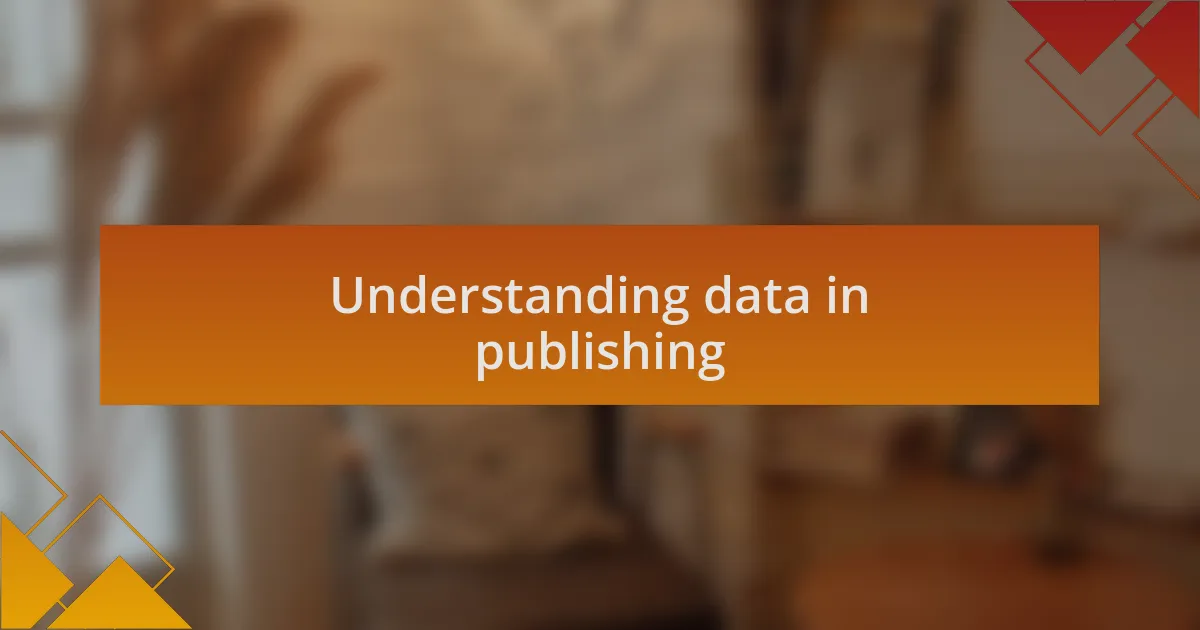
Understanding data in publishing
In the world of independent publishing, understanding data isn’t just about crunching numbers—it’s about gleaning insights that can shape your entire publishing strategy. I remember the moment I first delved into reader analytics; it was like flipping a light switch on in a dark room. Suddenly, I understood what genres resonated with my audience and how their preferences changed over time.
When analyzing metrics such as sales figures, social media engagement, or website traffic, it’s essential to ask yourself, “What story does this data tell?” I once noticed a sudden spike in my book sales right after a targeted social media campaign. Digging deeper revealed that the posts highlighting behind-the-scenes glimpses of my writing process were particularly compelling, which prompted me to make that a regular feature.
Data can feel overwhelming at times, but I’ve learned to view it as a conversation with my audience rather than a chore to manage. I often ask myself how these insights can inspire my next project or improve my marketing efforts. For instance, the feedback from reader surveys provided unexpected turns for my upcoming book series, leading me to explore new characters and plotlines that align more closely with my audience’s desires.
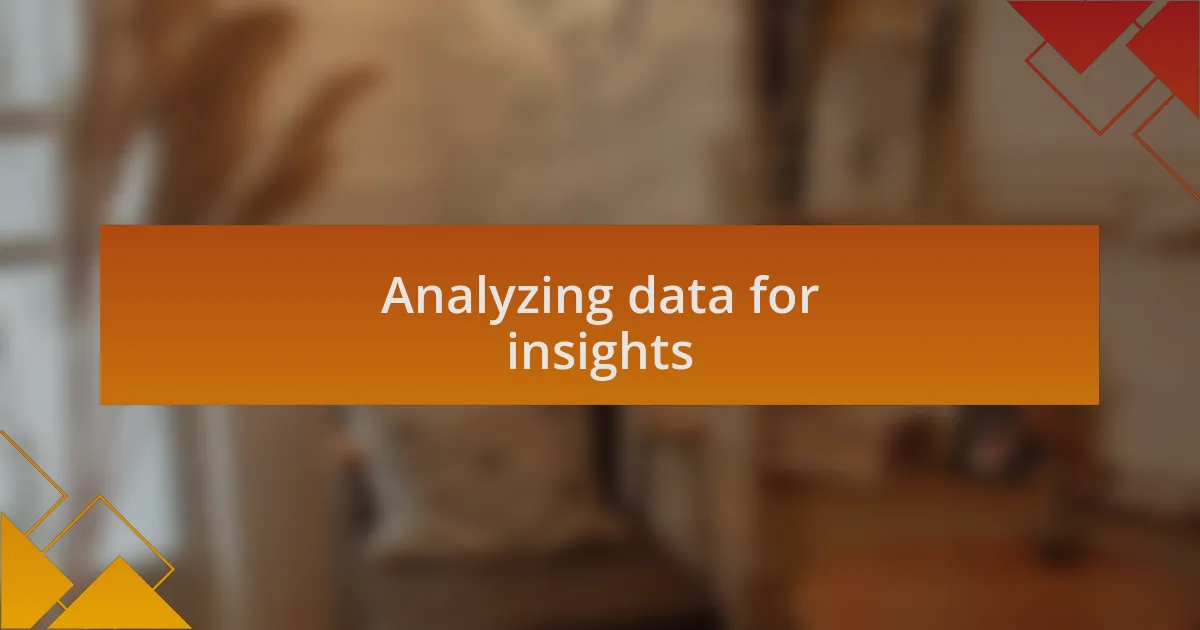
Analyzing data for insights
Diving deeper into data analysis has truly revolutionized my understanding of reader behavior. One specific instance that stands out was when I reviewed my book’s chapter statistics on a digital platform; I was shocked to see a consistent drop-off at a particular chapter. Why was that point so disengaging? When I revisited the content, I realized it lacked tension and intrigue, prompting me to rewrite it. This not only improved that chapter but ultimately boosted overall sales.
I’ve also found that analyzing reader demographics offers invaluable perspectives. After implementing a survey, I discovered that a significant portion of my audience were young adults. This revelation made me rethink my marketing approach and the themes I emphasize in my writing. Bringing forth topics that resonate with this age group has positively impacted my engagement rates and fostered a closer community around my work.
Incorporating feedback loops into my publishing routine has been incredibly fulfilling. After a recent release, I encouraged my readers to share their thoughts on social media. The responses flooded in, not just expressing their love for the book, but also showcasing specific elements they adored. This interaction has inspired me to incorporate their suggestions in future works and made the readers feel valued, creating a more collaborative partnership in my publishing journey.
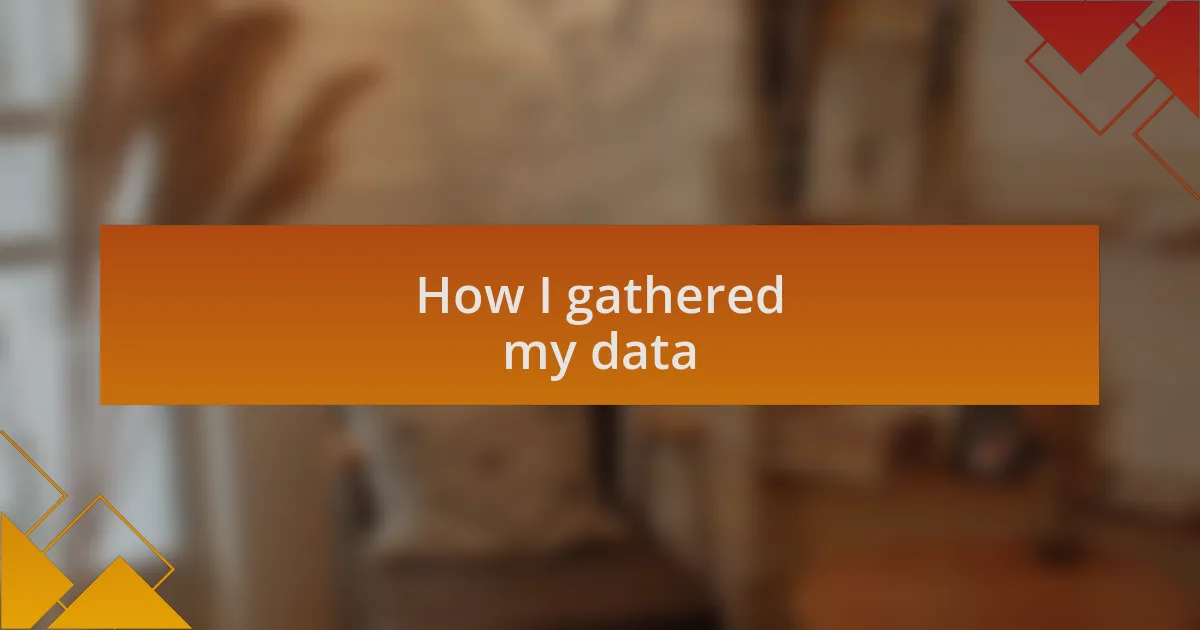
How I gathered my data
Gathering data has been an enlightening journey for me, and I started with simple methods, like tracking my website and social media analytics. I remember feeling a rush of excitement when I first set up Google Analytics. Seeing how many visitors landed on my pages and what content held their attention transformed how I viewed my audience. Did you ever wonder how a single number can change a narrative? For me, those numbers became powerful indicators of what was resonating with my readers.
I also leaned heavily on direct engagement with my audience. By hosting live Q&A sessions, I not only built rapport but gathered real-time insights into their preferences and opinions. One evening, while discussing characters from my latest book, a reader shared an unexpected interpretation that took me by surprise. Their perspective not only illuminated aspects of my writing I hadn’t considered but prompted me to explore similar themes in future projects. This connection and the insightful feedback I received were invaluable in shaping my narrative choices.
Additionally, I utilized reader surveys, which brought forth a treasure trove of data. Crafting those surveys felt like an adventure, and when the responses started pouring in, I was thrilled to uncover trends and patterns. I recall one survey revealing a significant interest in more diverse representation in my stories. That insight struck a chord with me and reshaped my approach to character development. Have you ever found that a single survey can reshape your creative direction? For me, it became a launching pad for new ideas, ultimately enriching my writing journey.
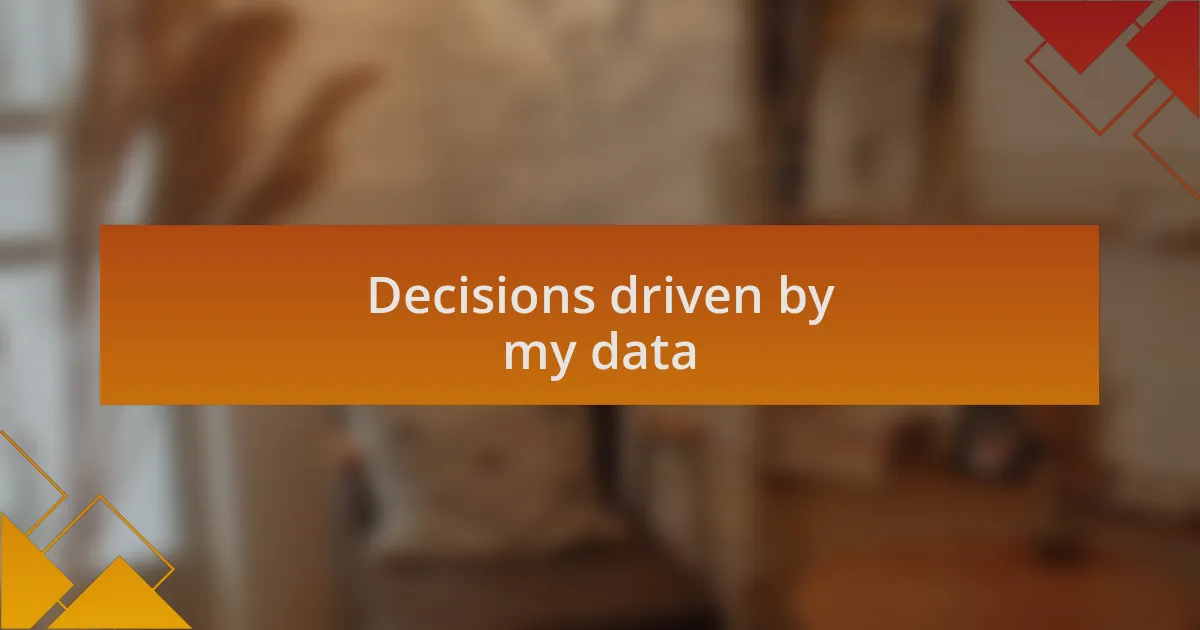
Decisions driven by my data
Decisions are often fueled by the data I’ve gathered, leading me to make significant changes in my writing approach. One particular instance stands out. After analyzing my content performance, I discovered that readers engaged more with posts containing personal narratives than those purely focused on tips. This revelation prompted me to weave more of my own experiences into my articles, transforming not just the material I produced, but also the way I connected with my audience. Have you felt that thrill when you discover exactly what your readers crave? It’s like finding a hidden treasure.
In another instance, my readership demographics revealed a surprising trend: a growing number of young adults were gravitating towards my work. This data point led me to reconsider my writing style and themes. Instead of solely focusing on deep philosophical questions, I began exploring lighter, more relatable topics. I remember penning a piece about the joy of procrastination, and the feedback was overwhelmingly positive. It’s fascinating how shifting your focus based on data can feel like having a direct conversation with your audience about what matters to them.
I also learned the value of timing through data analysis. By examining when my readers were most active, I adjusted my posting schedule to align with their peak engagement hours. For instance, previously, I would publish articles in the morning, but my analytics revealed that the evenings attracted more traffic. After making that simple tweak, I noticed a significant uptick in comments and shares. Isn’t it incredible how a small change like timing can lead to big results? Understanding these nuances has made my decision-making process far more strategic and informed.
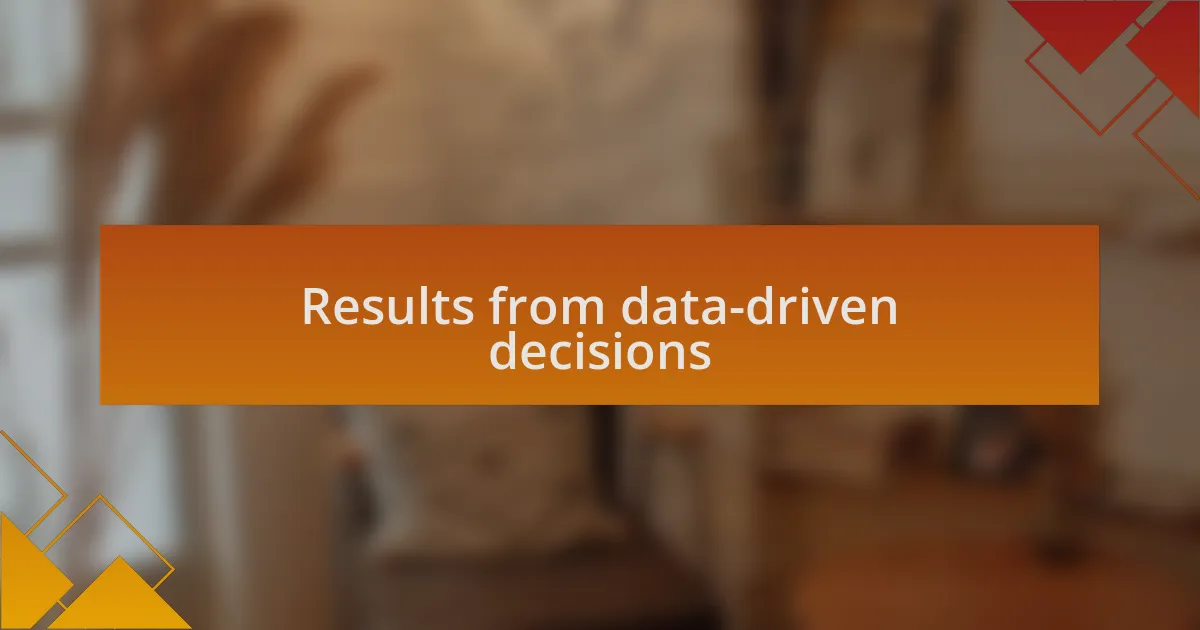
Results from data-driven decisions
The impact of these data-driven shifts has been remarkable. For example, after diving deeper into my analytics, I realized that my readers responded particularly well to interactive content, like polls and quizzes. I decided to create a monthly survey on what topics they wanted me to cover next. The response was overwhelming, and not only did it increase engagement, but I also felt a renewed sense of community with my audience. Have you ever experienced that moment when your readers feel like active participants in your creative journey?
Another fascinating result was the change in my social media strategy. By studying which platforms brought in the most traffic, I shifted my focus from mostly Facebook to Instagram. The data revealed my readers enjoyed visual content more than I had assumed. I remember posting a simple behind-the-scenes video of my writing process, and the engagement skyrocketed. It felt exhilarating to connect through visuals and see such immediate feedback. How satisfying is it when you adapt your approach and witness your audience resonate with your efforts?
I’ve also learned that feedback loops can enhance creative growth. By applying data insights to improve my content, I began hosting regular feedback sessions with a select group of loyal readers. Their insights, paired with my data findings, have guided me in making nuanced changes that truly reflect what my audience values. The excitement of collaborating directly with them not only enriched my writing but also deepened the relationship I had with my community. Isn’t it inspiring to think about how numbers can translate into genuine connections and creativity?